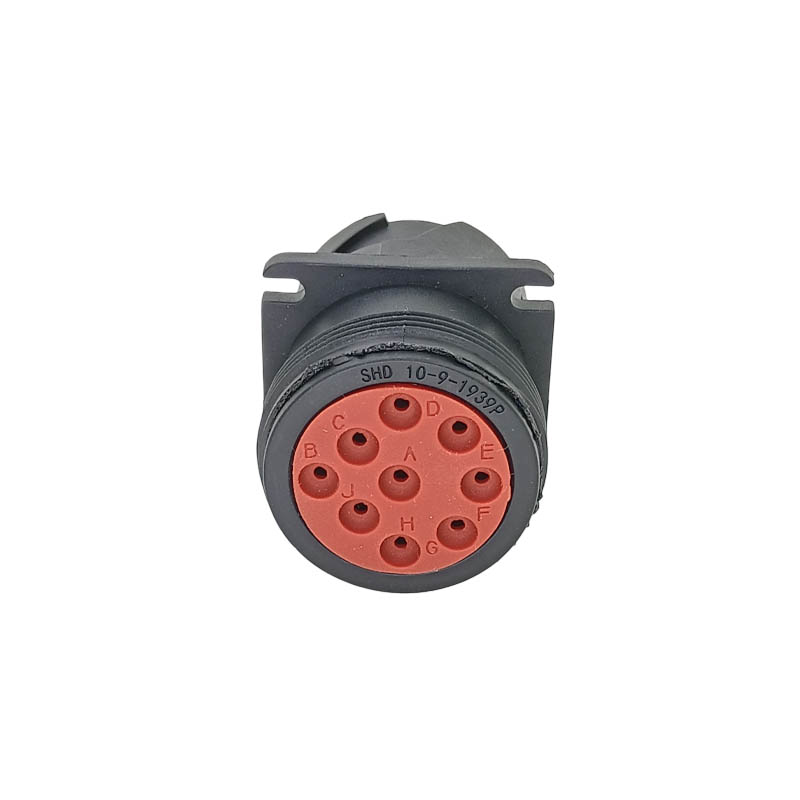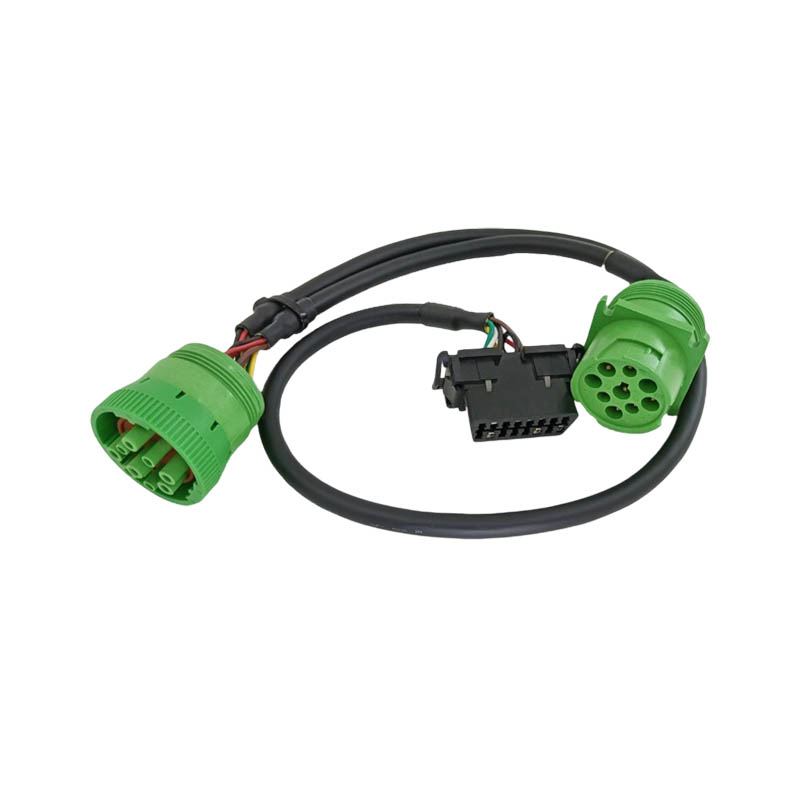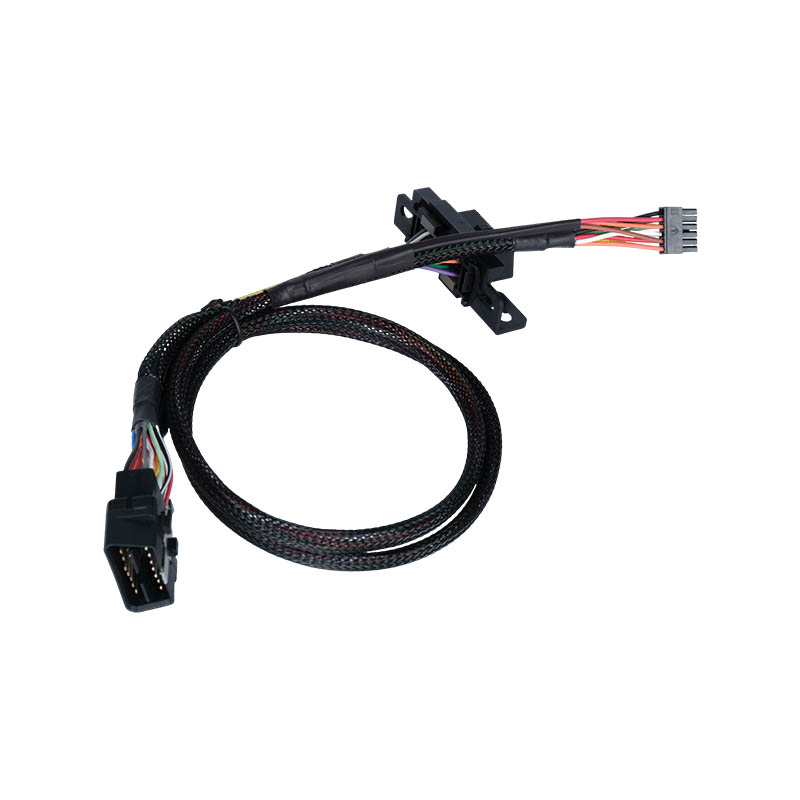How to control the stability of contact resistance during the terminal crimping process of automotive wiring harness?
Release Time : 2025-10-08
During the crimping process for automotive wiring harness terminals, the stability of contact resistance directly impacts the signal transmission quality and safety of the vehicle's electrical system. Unstable contact resistance can lead to wiring harness heating, signal distortion, and even short circuit risks. Therefore, a stable control system must be established across multiple dimensions, including material selection, process design, equipment control, and quality inspection.
Material selection is fundamental to controlling contact resistance. Terminal materials, such as phosphor bronze or silver-plated copper alloy, must possess high conductivity, low resistivity, and excellent oxidation resistance. These materials reduce electron migration resistance and form a dense oxide film through surface plating, preventing increased contact resistance due to oxidation over time. The conductor material must also match the terminal material. For example, oxygen-free copper conductors, whose purity and crystal structure reduce internal resistance and minimize energy loss at the crimping interface, can be used. Inadequate material matching can result in micro-gaps at the contact surface, potentially leading to localized overheating. Therefore, the terminal and conductor combination must be carefully selected based on the wiring harness specifications.
The crimping process design directly impacts the stability of contact resistance. Terminal crimping involves cold welding the wire and terminal together using a die. Crimping height, length, and shape are critical parameters during this process. Insufficient crimping height reduces the contact area between the wire and terminal, increasing resistance. Excessive crimping height can break the wire or deform the terminal, compromising contact stability. A hexagonal crimping structure increases contact area, reduces burrs and cavities, and achieves more uniform current distribution. Furthermore, a segmented crimping process optimizes the contact area for high-voltage wiring harnesses, avoiding the bowing deformation associated with traditional crimping and further improving contact resistance stability.
Equipment control is key to ensuring crimping quality. Fully automatic crimping machines use sensors to monitor crimping force, speed, and position in real time, ensuring that each set of crimping parameters meets process requirements. For example, crimping force must be dynamically adjusted based on the wire's cross-sectional area to avoid contact failure or overpressure damage caused by pressure fluctuations. Furthermore, the equipment must be equipped with a die wear warning system to regularly replace worn jaws and pressure plates to prevent poor crimping due to decreased die precision. Automated equipment can also integrate data traceability to record the crimping parameters of each batch of wire harnesses, providing a basis for quality analysis.
Quality inspection is a key step in verifying contact resistance stability. Pull-off testing simulates the vibration and pulling forces experienced in actual use to verify the bond strength between the terminal and the wire. Insufficient pull-off force indicates loosening of the contact surface, leading to increased resistance. Cross-sectional analysis uses a microscope to observe wire deformation in the crimp area. Ideally, the crimp wings should be closed and symmetrical, without voids or cracks, ensuring an unobstructed current flow path. Contact resistance testing uses a four-wire Kelvin measurement method to eliminate wire impedance interference and accurately measure the resistance of the crimp interface. If the test result exceeds the standard range, the production process must be traced and corrected immediately.
Environmental control also has a significant impact on contact resistance stability. Wire harness production workshops must maintain a constant temperature and humidity to prevent excessive humidity from causing terminal surface oxidation or temperature fluctuations from causing material expansion and contraction, which could affect crimping accuracy. Furthermore, dust-free production areas must be maintained to prevent contaminants such as dust and oil from adhering to the terminal or wire surfaces, forming an insulating layer and increasing contact resistance.
Process optimization requires continuous improvement based on actual application scenarios. For example, high-voltage wiring harnesses for new energy vehicles require the use of high-conductivity copper terminals and cross-linked polyethylene conductors, and the heat dissipation structure of the crimping die must be optimized to reduce heat generation during high current flow. To meet lightweighting requirements, aluminum-magnesium alloy conductors require specialized crimping processes to compensate for conductivity and ensure that contact resistance meets requirements.
The terminal crimping process for automotive wiring harnesses requires a comprehensive system to ensure contact resistance stability, encompassing rigorous material selection, precise process control, intelligent equipment manufacturing, closed-loop testing, and strict environmental management. This process not only impacts the electrical performance and mechanical reliability of the wiring harness but also provides fundamental support for the safety and intelligence of the entire vehicle.







